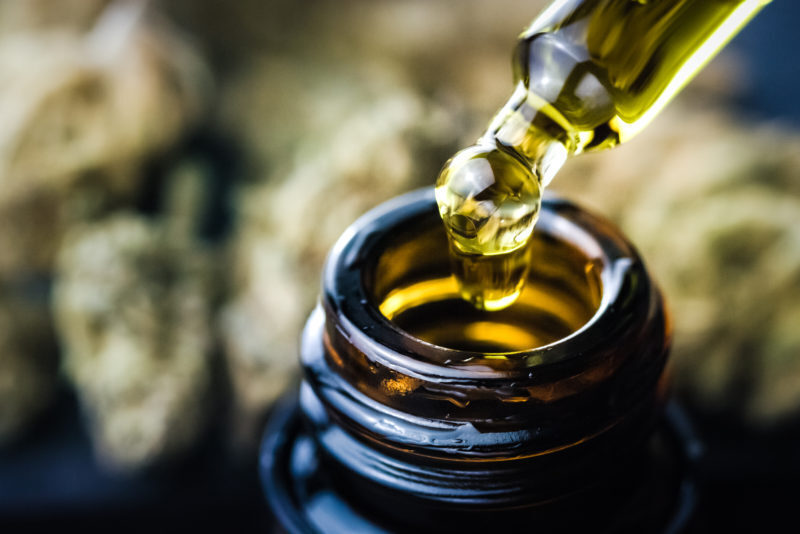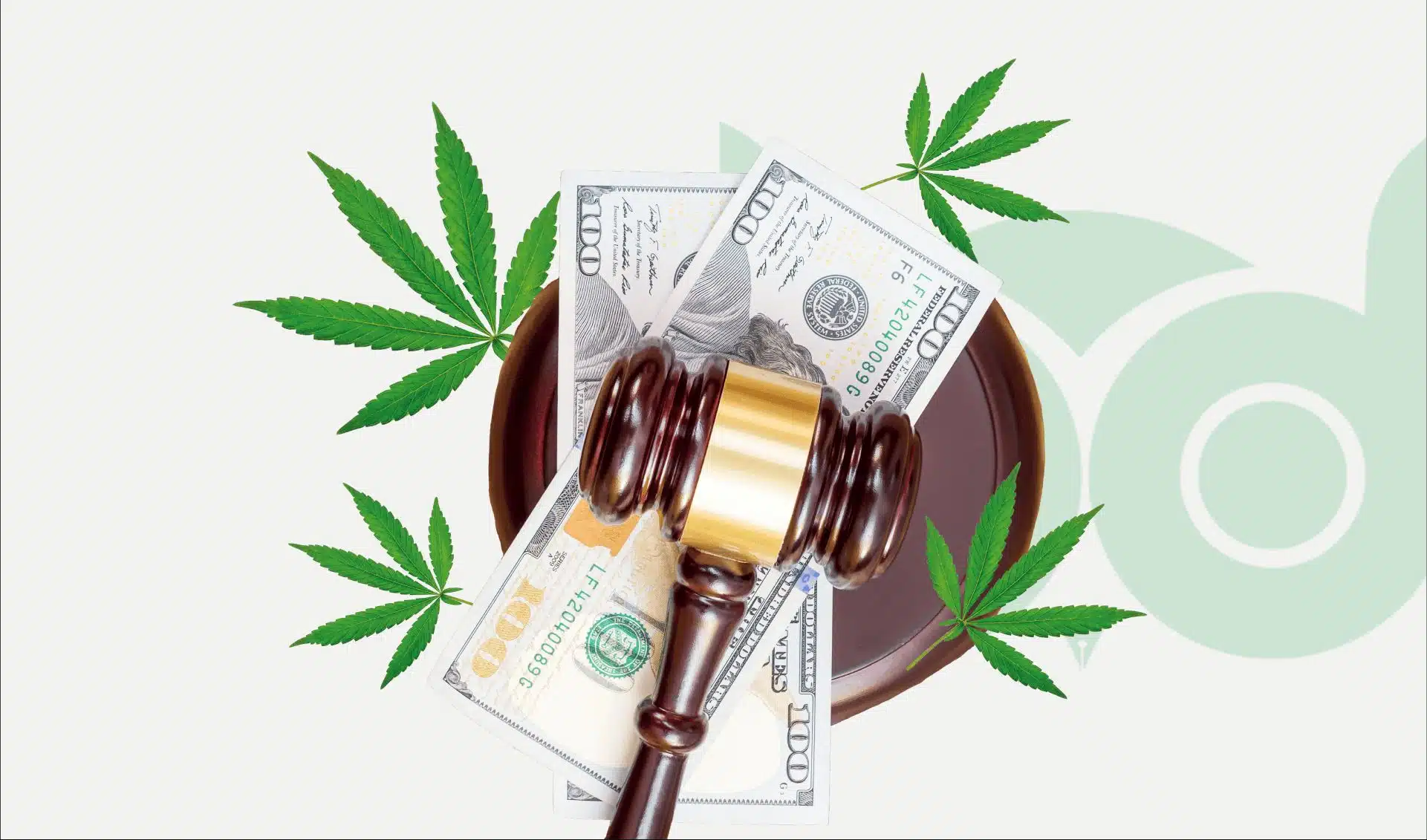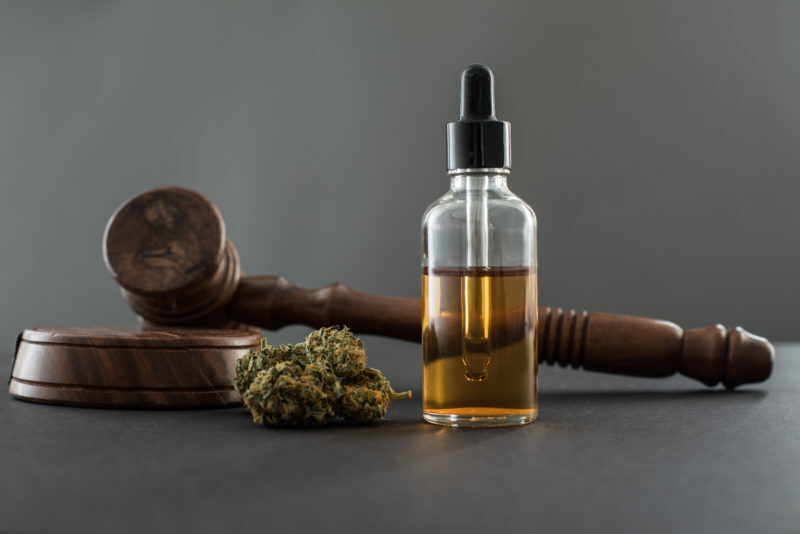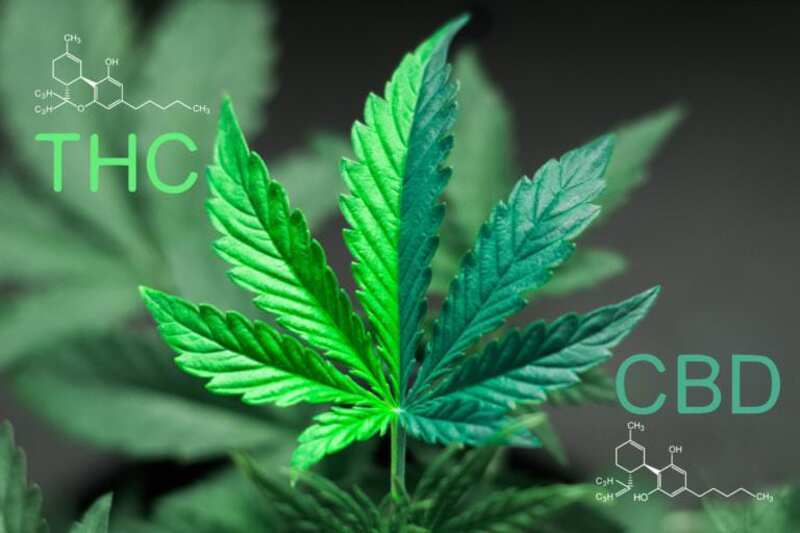-
- Market Research
- |
- CBD Near Me
- |
- Giveaways
- |
- Newsletter
- |
- Contact
- |
- Advertise
- |
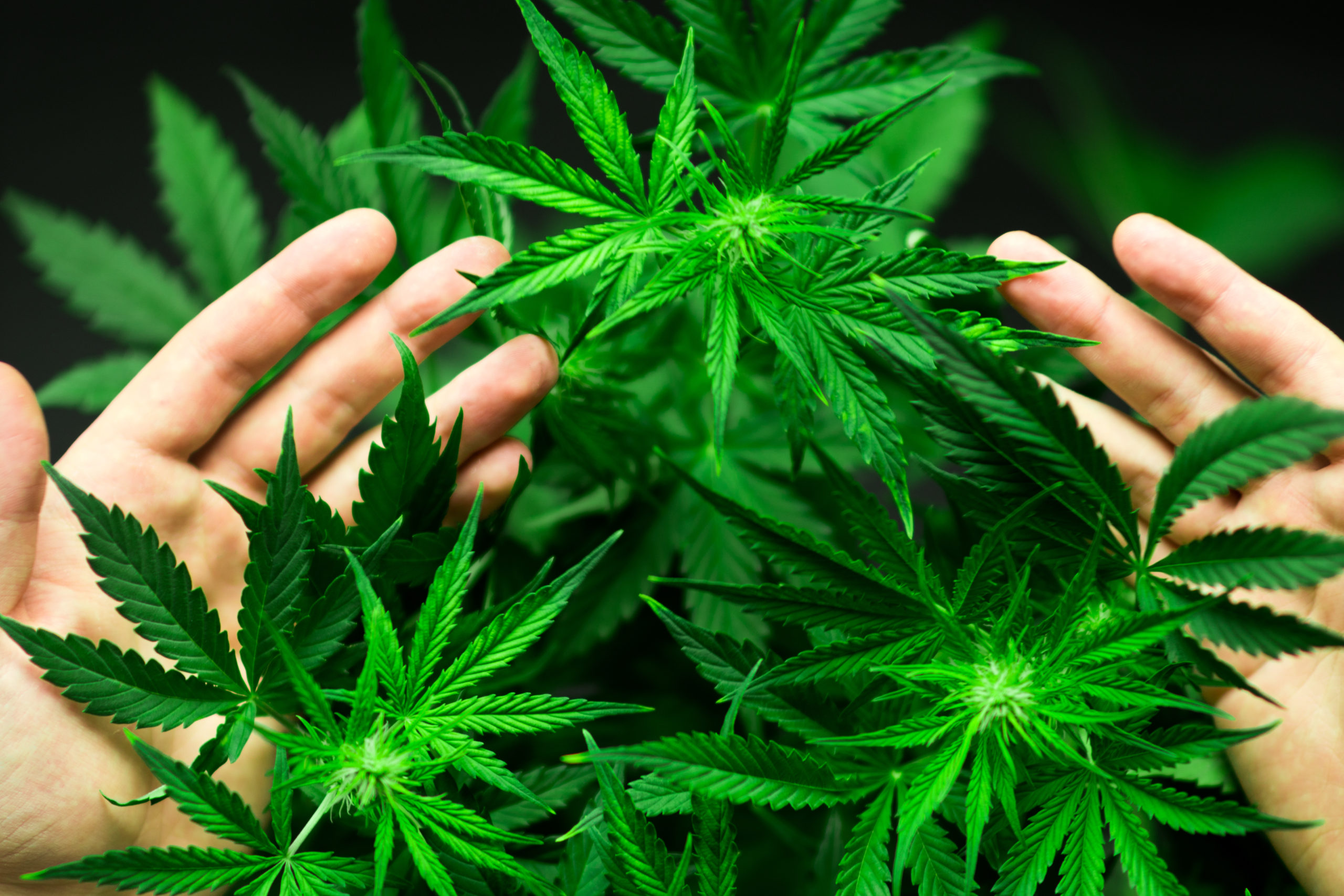
Just as CBD and/or marijuana consumers were finally mastering potency and purity conversions, the industry began to experiment with CBD:THC ratios, adding another garbled set of numbers to product labels.
However flustering it may seem at first glance, this ratio (commonly 1:1, 4:1, 10:1, and more) is proving itself very important in terms of the therapeutic potential and overall user experience associated with products containing both of these cannabinoids.
The easiest way to conceptualize the effects of CBD to THC ratios is to simply explore how cannabidiol and tetrahydrocannabinol interact with each other and our bodies without worrying about the actual ratios at first.
Once you understand the general dynamic between these two cannabinoids, it’s easier to predict how they will interact at high and low ratios.
Then, we’ll roll out the research, which will explain why it’s not quite that simple.
A Snapshot of the CBD:THC Relationship
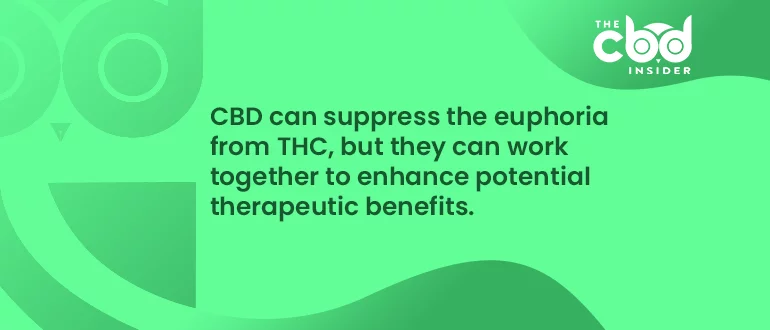
Cannabidiol and tetrahydrocannabinol are the two most extensively studied substances found in the cannabis family of plants, largely due to their abundance, high bioactivity, and vast therapeutic potential.
They share more health benefits than not, including purported anti-nausea, mood-enhancing, and pain-modulating properties, among many others.
However, some of the health benefits and properties of cannabis products still being exhumed by researchers are mutually exclusive to one or the other cannabinoid.
For example, THC is psychoactive, meaning it can cause a “high,” and may help treat glaucoma (where CBD doesn’t).
Conversely, non-intoxicating CBD is more commonly indicated as an antipsychotic supplement.
In states where medical or recreational use of marijuana is legal, consumers can choose from many products containing both THC and CBD.
If your product contains both THC and CBD, it’s best to know at least the basics of how these cannabinoids interact with each other.
CBD Sneakily Suppresses the THC High
In many instances, CBD and THC work synergistically to enhance their therapeutic effects, but they clash when it comes to producing a high.
CBD can potently negate the effects of a THC high by impairing its ability to bind to the CB1 receptor cell, one of two endocannabinoid system receptors (CB1 and CB2).
How exactly does CBD “beat” THC to this receptor without producing an even more intense high or other undesired effects?
Choose your favorite term between these two and rattle it off to impress friends: CBD is both a non-competitive antagonist of THC and an allosteric modulator at CB1.
This means that it binds to a different CB1 receptor site than THC does and changes the shape of the receptor itself (allosteric modulation), reducing CB1’s affinity for THC without directly overpowering the cannabinoid (non-competitive antagonism).
Of course, both pre- and post-legalization consumers of experience can attest to this effect without the neurology lecture, because for many, the addition of CBD makes the difference between an enjoyable user experience and an intolerable one.
The Entourage Effect
As mentioned, CBD and THC aren’t always at odds with each other.
In fact, it’s more common to see these two cannabinoids working synergistically to enhance their shared benefits, a phenomenon known as the entourage effect.
The exact extent to which the hundreds of compounds in full-spectrum cannabis products interact with one another and our cells is extremely difficult to quantify.
Researchers have at least confirmed that the entourage effect exists, but diving into the specific mechanics will take more time and attention.
For now, it’s important to acknowledge that this effect doesn’t apply in every scenario; as the below findings will indicate, changing the THC:CBD ratio doesn’t always influence the processes observed by experimenters.
CBD:THC in the Research
The most clinically (and societally) relevant way to examine the relationship between these cannabinoids is to test and retest many CBD:THC ratios across highly common conditions.
As such, we’ve compiled research findings that explain how this relationship may be used for more targeted treatments across diverse patient populations.
Generalized Pain
A study co-authored by Yale University, VA Connecticut Healthcare System, and Scripps Research Institute (CA) faculty found that keeping the CBD level at least ten times higher than THC seems to yield more potent results in the area of pain management.
Per the study, “It has been shown that CBD potentiated the antinociceptive effects of a threshold dose of THC when administered in a 10-100:1 CBD-to-THC ratio in mice, but had no influence on the effect of a 10-fold higher dose of THC.”
Obviously, the “10-100” end of the ratio is in great need of further calibration, but learning that CBD is more helpful at these proportions is an excellent springboard for contemporaries to use in further studies.
The study explains that CBD may intervene with pain at serotonergic and opioid receptors, but that these effects would not be synergistic, i.e., they would increase linearly with or without THC accompaniment.
MS-Induced Spasticity
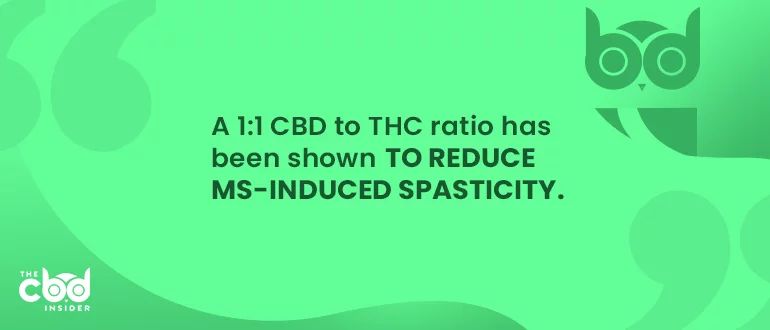
The evidence supporting a particular CBD-to-THC ratio is especially well-formed in this area, thanks to Sativex.
Sativex is an FDA-approved multiple sclerosis drug containing a 1:1 CBD:THC ratio.
After summarizing three Sativex clinical trials, each of which demonstrated the drug’s positive impact on MS spasticity outcomes, this study from France’s University of Lille describes how “Sativex does not exhibit the side effects typically associated with recreational cannabis use and there are no signs of drug tolerance or withdrawal syndrome.”
In other words, Sativex is an exemplary use of the CBD:THC ratio because it leverages the THC-high-combating ability of CBD while still taking advantage of the entourage effect.
Anxiety
THC is fickle when it comes to anxiety, says the research.
In low doses, it can fight anxiety, but in higher doses, it can encourage it.
In either case, including CBD at a 2:1 ratio has been shown to reduce THC-induced anxiety.
This double-blind trial conducted by psychobiology experts of Brazil’s Paulista Medical School used a mixture containing 1mg/kg CBD and 0.5mg/kg THC to confirm that a 2:1 CBD-to-THC ratio for anxiety is indeed effective.
CBD, by itself, can address anxiety as well.
Cognition
The Yale study referenced above also referred to a trial in which a 100:1 CBD:THC ratio “blocked THC-induced reductions in fixed-interval responding for food when administered 60 minutes prior to THC in macaques.”
In other words, CBD prevented the cognitive sluggishness or “fog” induced by THC that was causing rats to miss a specific cue, even when this behavior was associated with reward.
Interestingly, a 5:1 ratio was shown in the same finding to worsen a specific type of THC-induced cognitive impairment in male rats—spatial working memory.
Also of note is the authors’ realization that CBD worked more effectively across multiple therapeutic applications when consumed between thirty minutes and 24 hours prior to THC consumption, and that co-administration was often not as effective.
Clearly, we need more research to determine the most effective dose range and methodology while preventing potentially adverse effects.
How Growing CBD:THC Insights Might Affect the Industry
Focus on CBD-only products as well as high CBD-to-THC ratio products will likely continue to increase as research affirms benefits.
If the sale and consumption of THC products are ever federally legalized (while CBD’s status remains ambiguous), CBD may be forced into an even tougher and more awkward position.
In this case, the industry may regress to the earlier days of high-THC and low-CBD emphasis.
Brands selling products containing both cannabinoids may be sequestered to the same states CBD is now.
The Everyday Consumer’s Takeaway

As the cannabis industry continues to explore CBD:THC ratios, consumers will need to understand how this value can affect:
- Psychoactive profile (feeling high, paranoid, calm, etc.)
- Mood-stabilizing properties
- Duration and potency of pain, anti-emetic, or other benefits
Most importantly, consumers should be able to wield their understanding of this ratio to select products that specifically address their health concerns.
The legal conversation is in even greater need of clarification, no thanks to state-level discrepancies in how CBD and THC are approached.
Most states at least allow for the sale and consumption of CBD, so long as it complies with the federally mandated 0.3% THC limit.
A select group of states will even allow THC recreationally.
Still, some states will rally against THC and even CBD to an extent that seems to clash with federal law (the 2018 Farm Bill actually allows states to place more stringent restrictions on CBD).
For example, the Nebraska state legislature doesn’t officially differentiate CBD from marijuana, prohibiting the sale of cannabidiol even though it’s federally legal.
Even with federal legalization of THC, if state-specific CBD laws aren’t relaxed, growers may be forced to produce low-CBD strains.
Therefore, whichever direction the cannabis industry is steered in, consumers who understand how CBD and THC interact with each other will be that much more capable of addressing their physical and mental health issues.


